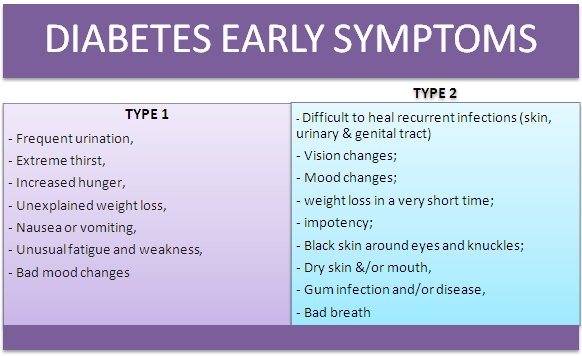Diabetes is a disease in which blood sugar levels that are higher than usual and it has an impact on how severe symptoms of diabetes are. When your body is unable to produce enough of the hormone insulin, which is produced by unique cells in the pancreas called islets, you get diabetes. Your cells can only be opened by insulin, which acts as a “key,” allowing glucose from your food to enter. Your body then uses that glucose as fuel. However, a number of significant factors can go wrong and shows the symptoms of diabetes. When you have high sugar levels, your body either produces insufficient insulin or uses it improperly. High sugar levels remains in your bloodstream when there is insufficient insulin or when cells cease reacting to insulin. That can eventually lead to major health issues like renal disease, eyesight loss, and heart disease.
What are the Major Risk Factors and Symptoms of Diabetes?
Important Symptoms Of Diabetes:
The symptoms of diabetes is influenced by blood sugar levels. Some people may not exhibit signs of diabetes, particularly if they have type 2 diabetes or prediabetes. Type 1 diabetes symptoms frequently appear suddenly and are more severe.
- Noticing a greater than normal thirst.
- Frequent urination.
- Weight loss without exerting effort.
- Ketones are present in the urine. When there is insufficient insulin available, muscle and fat are broken down, producing ketones as a consequence.
- Becoming worn out and fragile.
- Irritated or experiencing other mood swings.
- Having visual problems
- Having wounds that take a long time to heal.
- Getting several infections, including vaginal, skin, and mouth infections.
Important risk factors of diabetes:
Type 1 Diabetes Risk Factors:
- According to research, certain viruses may cause type 1 diabetes by making the immune system work against the body rather than to protect it from disease and illness.
- The likelihood of having prediabetes appears to be higher among those who live in northern regions. According to some theories, residents of northern countries spend more time indoors, especially during the winter, which puts them closer together and increases the risk of viral illnesses.
- Researchers have hypothesized that kids who were introduced to cow’s milk at an early age may have a little greater prevalence of type 1 diabetes.
- Due to the fact that it makes the immune system of the body turn against itself, type 1 diabetes is an autoimmune disease.
Type 2 Diabetes Risk Factors:
- In addition to raising the risk of other diseases including cancer and heart disease, smoking is linked to a higher risk of type 2 diabetes.
- Alcohol abuse is linked to a higher risk of developing type 2 diabetes. According to current recommendations, you shouldn’t habitually consume more than 14 units each week, and you should spread them out evenly over 3–4 days.
- If you have disturbed sleep this can be associated with an increased the risk of type 2 diabetes.
- It is crucial to periodically check your blood glucose levels after having gestational diabetes since you have a higher chance of getting type 2 diabetes.
- Sedentary living is defined as living a lifestyle that involves spending significant amounts of time sitting down, excluding sleep. Sedentary lifestyles are linked to a high risk of type 2 diabetes.
Comparison of Type 1 Diabetes vs Type 2 Diabetes:
We have three different types of diabetes i.e. type 1 diabetes, type 2 diabetes and gestational diabetes.
- Type 1 Diabetes. Type 1 diabetes can occur at any age. But children and specifically the ones within 10-19 years are more vulnerable to this type. In type 1 diabetes, the patient’s body makes very little or no insulin at all. So to make up for the deficiency of insulin, they need to inject the insulin on daily basis to control blood sugar levels.
- Type 2 Diabetes. Type 2 diabetes doesn’t let your body use insulin the way it should use. Adults are more likely to have type 2 diabetes. It can be prevented with increased physical activities. A healthy diet can also help in this regard. But with the passage of time, you need medication as well to control blood sugar levels.
- Gestational Diabetes. It can consist the higher blood glucose in pregnant women. This can cause complications for not only the mother but the child as well. This type of diabetes can disappear after pregnancy but there are high chances that the child or the mother can develop type 2 diabetes.
One thing to remember, if you are at the early stages of diabetes, you can control your blood sugar levels by changing your lifestyle a little bit. Include more physical activities in your routine. Controlling it in the early stages will help you prevent diabetes from attacking other organs (heart, kidneys, etc.).
How to control high blood sugar levels effectively?
Eating Plant Foods Really Helps
Vitamins, carbohydrates, and minerals in our diet come from plants. Sugars and starches are sources of energy in your body that come from carbohydrates. Foods that have a high amount of fibers are very useful for weight loss which ultimately decreases the risk of diabetes or help to control blood sugar levels. The foods that include rich fibers are:
- Fruits such as tomatoes, and peppers.
- Green leafy vegetables like spinach, broccoli, and cauliflower.
- Chickpeas, lentils, and grains such as whole-wheat pasta and bread, whole grain rice, quinoa, and oats.
These fiber-rich foods have the following benefits:
- These foods slow down the process of absorption of sugars which ultimately helps to control blood sugar levels.
- preventing dietary fat and cholesterol from being absorbed
- Fiber-rich foods will help you eat less because these foods are rich in energy as well.
You need to avoid foods that have high sugar level and have lower nutrients. These foods include fruit juices, white bread, and processed foods with sugar
More Physical Activities Can Help to Control Blood Sugar Levels:
Physical activities are always best for your health. Different physical exercises may help you reduce your blood sugar and helps keep it within normal range and lose weight. Most adults have the following weight-loss and weight-maintenance goals:
- Resistance exercise. Exercises included in resistance exercise are weightlifting, calisthenics, and yoga. These exercises, if carried out 2-3 times a week, will increase your balance, strength, and ability to live an active life.
- Limited Inactivity. Long periods of inactivity, such as sitting at a computer, can be broken up to help to control blood sugar levels. Every half an hour, take a few minutes to stand, move around, or do some mild activity.
- Aerobic exercise. A 30 minutes or more aerobic exercise like walking fast, biking, swimming, or running is recommended. The duration per week could be of 150 minutes
Losing Weight really Helps to Control Blood Sugar Levels:
Weight loss is a great way to prevent diabetes. Because losing weight drastically reduces the risk of developing any type of diabetes. According to Mayoclinic, a study was conducted in which people reduced the risk of diabetes by 60% after losing weight 7% of their weight.
To avoid disease progression, persons with prediabetes lose at least 7% to 10% of their body weight. More weight loss will result in even more advantages. First, assess your current body
Foods To Avoid That Increase Blood Sugar Level
Blood sugar is produced by the foods you consume. Insulin, a hormone, aids in the movement of sugar from your bloodstream into cells in your body, where it is used for energy. However, if your blood sugar levels fall too low, you may experience a variety of symptoms, some of which may be serious. Hypoglycemia, or low blood sugar levels, can cause fatigue and weakness. Eating high-glycemic foods, which are carbohydrate-containing foods that quickly raise your blood sugar levels, can often prevent or treat the condition and restore your blood sugar to normal levels.
Fruits
Fruits with a high glycemic index, such as watermelon, pineapple, bananas, and grapes, can quickly raise your blood sugar.
Dry Fruits
Dry fruits have a high sugar concentration, but only eat 2-3 pieces of dry fruits. Dried fruits have a strong component for blood sugar regulation and do not raise blood sugar as much as other carbohydrates.
Fruit Juice
Fruit juice contains a lot of sugar, which quickly raises blood sugar levels. It is usually best to avoid drinking fruit juice if you have diabetes. However, eating whole fruit is preferable to drinking fruit juice like apple, orange, banana and grapefruit.
Milk
Lactose is a type of carbohydrate found in dairy milk. Lactose is a sugar, more specifically a form of sugar, which means it is made up of glucose and galactose. Following digestion, lactose is divided into smaller forms, which are then absorbed into the bloodstream, raising blood sugar levels.
Vegetables
Cooked carrots, potatoes, and sweet potatoes can raise blood sugar levels. Raw carrots have a lower glycemic index than cooked carrots. Non-starchy vegetables, such as leafy greens, eggplant, zucchini, and cucumbers, contain carbohydrates and have little effect on blood sugar levels.
Related



